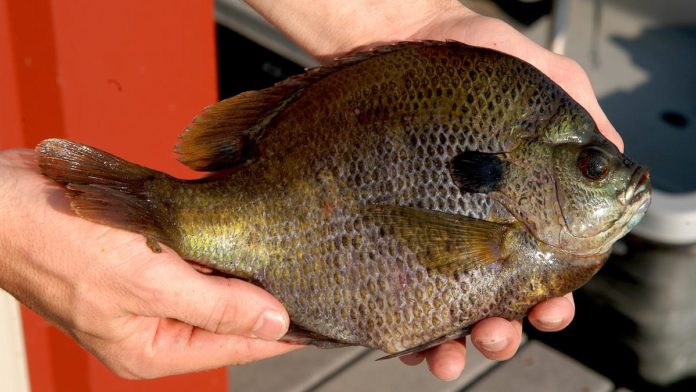I’ve been getting ready to go down and search for shed antlers now that the season has closed, but I suddenly remembered something else I need to do.
On the ranch where I hunt deer and turkeys, there is a smallish lake loaded with bass and very large bream. They are typically sitting on beds by late April — early for most bream in Texas — but they are there and exceptionally accommodating if you drop any kind of live bait in there.
I prefer what my dad and I called rubber spiders but which I’ve since learned are girdle bugs, little rubber or felt-bodied flies with white rubber legs flopping around. They are absolutely irresistible to big bluegills and redears and they don’t cost much so when a big bass jumps on the fly and breaks your leader you haven’t lost a $4 or $5 fly.
More: Leggett: Battle brewing between fishermen and conservation groups over Texas oysters
Now walking a shoreline and looking for bream beds and then casting in there and catching the fish may not seem very sportsmanlike to some folks, but when it comes to big bream — those that are big enough to fillet — anything is fair in love or fly fishing.
The fish put up a hell of a fight on a 3 or 4-weight rod and one of my all-time favorite Texas Parks and Wildlife biologists says you can’t over-fish bream in any lake so take all the big lunkers you can catch. That biologist is Dick Luebke, the guy you may remember for coming up with the dumb bass idea at TPWD.
Despite being a bass expert, Luebke was a freak about duck hunting and big bream and spent lots of time creeping around various lakes trying to catch them. He even grew his own meal worms to use for bait.
“Bream are always going to be on the bottom wherever you fish,” Luebke told me once. He routinely caught big bream in water that was up to 30-feet deep. Those obviously were not spawning fish.
More: Leggett: New book exposes pinhead remarks about national parks
Actually, most bream in Texas begin their spawn in late May and carry through into June. Their beds show up as shallow dish-shaped depressions in sandy bottoms along shorelines. Bluegills and redears can often be sharing spawning beds in the same area.
Redears have a distinctive red earflap off their gills and can grow to really big sizes. They are known as shellcrackers because anglers can sometimes hear the fish cracking snail shells they pick off the bottom in shallow water.
One thing I might suggest for anglers who want to fry up a batch of big bream. Get one of those cheap fish scalers at your local tackle store and use it to take the scales off those fish. Then take off the heads and remove the innards.
With a sharp knife, score several vertical lines on each side of the fish. Use whatever fish batter, corn meal or prepared mix you prefer to dust them and fry the fish whole. A big cast iron pan is best, but you’ll end up with some of the best eating you’ll ever find.
Credit: Source link






























